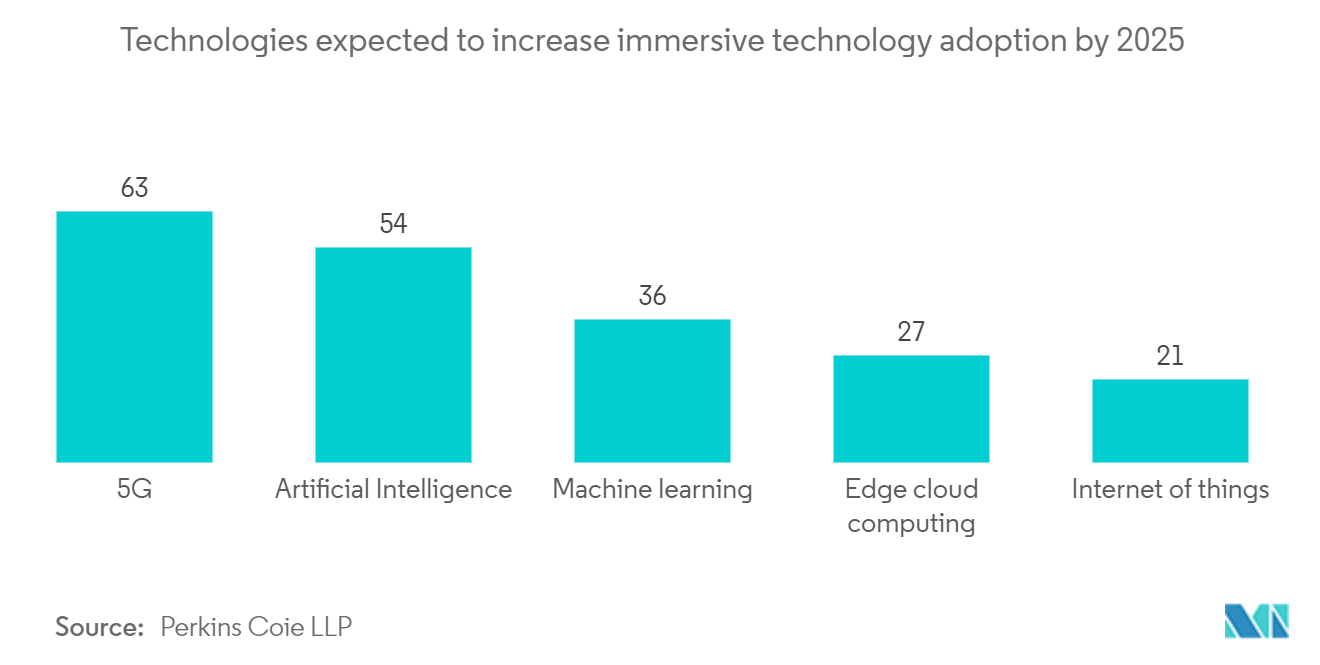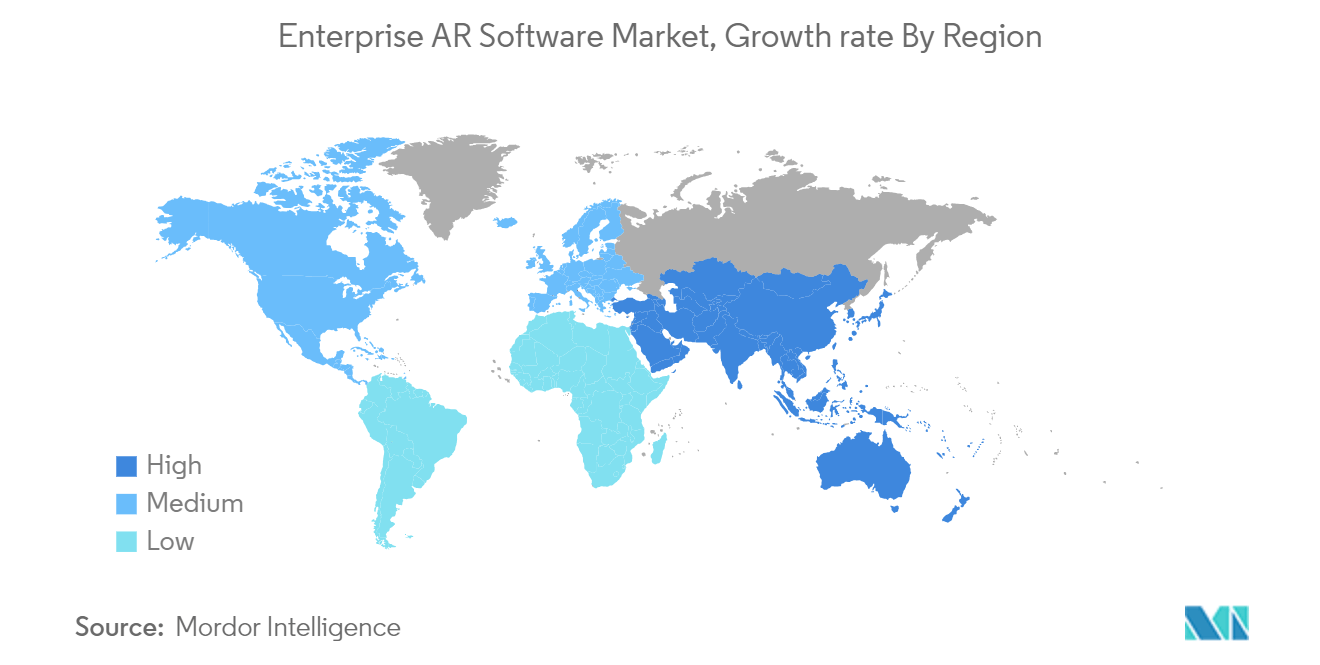Market Trends of Enterprise AR Software Industry
Retail Segment would grow at a higher pace
- AR has witnessed an increasing implementation in existing applications and platforms, including gamification for customer engagement, AR applications, social media-based marketing, and enterprise collaboration for unified workplace communications (such as Microsoft HoloLens, for assessing insurance risks). In addition, game developers are anticipated to use AR as a differentiator that could encourage new downloads.
- While AR is still over a decade away from achieving its full market potential, technological advancements in the space industry have accelerated the market studied over the past two years. The increasing availability of content and the launch of developer tools, such as ARKit, are driving the growth of this segment. The rising adoption and availability of the cloud have been major drivers for the AR market. It provides the platform and infrastructure to address the scalability limitation of on-premise AR experiences.
- For example, the WorkLink platform offered by ScopeAR is an augmented reality application suite that supports smartphones, tablets, and wearables. It is designed to ingest any CAD model format, making it easy for leading organizations to augment curated procedures over real-world objects to guide users. It also enables them to alert the user to avoid non-compliance or a safety incident if they deviate from the prescribed procedure.
- Furthermore, the precision of indoor location services has grown significantly, enabling AR location features for vehicles, campus, and in-building navigation and identification. Image recognition capabilities have allowed enterprises to use AR for object identification and display by assisting real-time decision-making.
- The future of the AR market is expected to be augmented by the amalgamation of the virtual and physical worlds to generate new, engaging, interactive, and personalized experiences that benefit both customers and the business.

Asia Pacific to Dominate Enterprise AR Market
- Asia-Pacific is one of the most important markets for Enterprise AR technology and is supposed to record the largest growth over the forecast period. The region offers one of the largest enterprise applications markets for AR software. Moreover, the increasing government programs favoring the development of AR technologies are also motivating local vendors to invest in the studied market.
- South Korea is also emerging as one of the significant markets for enterprise AR technologies, owing to the increasing government investments in the market studied and the rising adoption of AR technologies amongst the country's end-user applications. For instance, LG Uplus Corp., a major South Korean telecom firm, unveiled the world's first 5G-based augmented reality (AR) glass. The product was developed in partnership with Chinese mixed-reality product developer Nreal and chipmaker Qualcomm.
- Furthermore, as a result of the COVID-19 pandemic, there has been a big push for more adoption of enterprise AR technology in the region. The sudden need for virtual meetings, remote collaboration, more efficient workflows, and reduced IT costs favors AR technology in the enterprise. For instance, VeativeLabs, headquartered in India, offers employees in the power, oil, and gas industry a safe training atmosphere wherein they can learn in a simulated world without being exposed to hazards.
- Although China has emerged as a major player in the gaming sector, Japan is the third-largest market. The country's gaming companies are some of the major adopters of advanced AR technologies at a global level. According to the Computer Entertainment Supplier's Association, the Japanese gaming market is expected to reach approximately JPY 1.59 trillion by 2025. Some notable Japanese players in the AR software space include names such as GrapeCity, Cluster, and HADO (Meleap Inc.).
- Furthermore, the healthcare sector in the Asia-Pacific region is on the rise and has emerged as one of the key markets for AR technology. AR is revolutionizing telehealth, and AR tech is also expected to be incorporated into rehabilitation, treatment methods, and chronic care routines.


